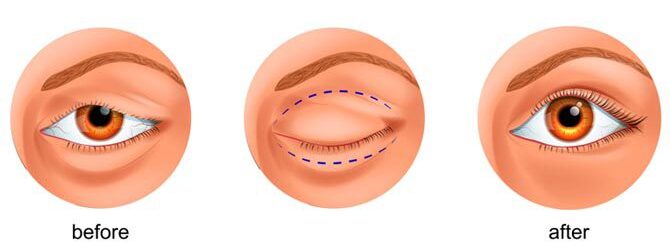Ophthalmic plastic surgery, also known as eye plastic surgery, treats problems with eyelids, tear ducts, and the area around the eyes. This includes how the eye and the area around it work and how they look.
Ophthalmic plastic surgeons
Ophthalmic plastic surgeons are super special surgeons exclusively trained in the anatomy of the eye and the structures around it. In addition, they often work closely with ophthalmologists, neurosurgeons, and dermatologists to give their patients the best care possible.
What is Facial aesthetics?
It is a group of cosmetic treatments and procedures meant to improve the look of the face, including the eyes and the area around them. This could include non-invasive treatments like Botox injections and dermal fillers and surgical procedures like facelifts and brow lifts. Facial aesthetics aims to make someone look natural and young while keeping their face’s unique features.
Ophthalmic plastic surgery and facial aesthetics are two different but related fields that focus on making the eyes and the area around them look better. Ophthalmic plastic surgery tends to focus more on medical and functional aspects, while facial aesthetics tends to focus more on making a face look better
Which of the eye conditions/diseases require Ophthalmic Plastic Surgery?
Some of the eye diseases and conditions that may require ophthalmic plastic surgery include:
- Ptosis – This eye condition refers to the drooping of the upper eyelid because of weakened or stretched muscles
- Entropion – this condition refers to the inward turning of the eyelid, causing the lashes to rub against the eye
- Ectropion – This is the outward turning of the eyelid, exposing the inner surface of the eyelid
- Eyelid tumours are abnormal growths on the eyelid that may need to be surgically removed, reconstructed, and sent for biopsy.
- Orbital fractures – they constitute fractures of the bones surrounding the eye, which may require surgical repair
- Tear duct obstruction – blockage of the tear ducts, leading to excessive tearing or infection.
Besides the above-mentioned oculoplastic diseases, other eye conditions that may be managed with oculoplastic surgery include congenital eye abnormalities, eyelid spasms, and facial nerve disorders.
Is it safe to opt for an Oncoplastic surgery?

Oculoplastic surgery is generally considered a safe and effective way to make the eyelids, eye sockets, and tear ducts look and work better and enhance your facial appearance. However, As with any surgery, there are potential risks and problems that you and your oculoplastic specialist should discuss before you opt for surgery. Nevertheless, with technological innovations, most of these procedures have become quite popular, with a high success rate regarding patient expectations and surgery outcomes.
The most common risks associated with such surgeries are bleeding, infection, scarring, and changes to how you see or move your eyes. Your doctor will examine your situation and medical history to decide if oculoplastic surgery is safe for you.
To minimize the risk of potential complications, it’s essential to go for a super-specialist, an experienced oculoplastic surgeon and carefully follow all pre-and post-operative instructions.

